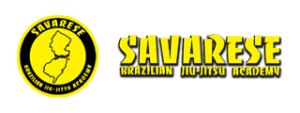Things to do to improve your BJJ in 2023
As I have doing evaluations and asking people to make goals, here is a list and can possibly help.
Things to do to improve in 2023:
1) Set a clear set of goals to follow and turn in to us so we can be on the same page
2) Set a schedule to follow every week but be flexible enough w/ that schedule to change to also get in takedowns classes and self-defense/MMA classes, BJJ is about more that just “competition” training and “rolling”.
3) USE THIS GROUP! This is such a valuable resource that so many of you do not use. Use it to review past weeks, maybe something that is working for you now hasn’t been shown in awhile and you can review, review if you forgot something etc. And post your questions, if you see a good article that piqued your interest etc. But please stay away from motivational quotes, there are a million other sites (including our IGs) for that.
4) Try to compete at least once per year. The 4 weeks of training prior will be the most focused and best training you get all year and if you truly have the “win or learn’ mentality, it will show you where you are weak or give you the confidence to try new challenges to grow.
5) Work outside the Academy….study matches of the highest levels (not just instructionals vs a willing opponent). Read books and watch documentaries (use the search button for the list I recommend). Do Strength and conditioning, read about and set a healthy diet and healthy eating habits (like don’t go to the diner at 11pm after class or eat full meals before bed). Get enough sleep. Add more stretching to be more flexible etc.
6) The goal is Black Belt, not Blue Belt. Keep short-term goals in perspective with long-term ones.
7) Learn underhooks and overhooks. And the hook sweep. And realize that improving your DEFENSE is just as important as your offense. if people can’t finish you, you are always still in the fight.
8) There is always going to be a SUPER TALL / SUPER FLEXIBLE / SUPER STRONG guy that you have to deal with. Train with him a lot. Learning to deal with different body types is part of Jiu-Jitsu. Seek them out, don’t avoid them.
9) Keep a book (especially during seminars). This is not for recall but reflection. Putting Jiu-Jitsu into words is so difficult that it will force you to really think about Jiu-Jitsu in a different way.
10) DO NOT MISS SEMINARS: we bring some of the best people in the world here to teach. You are NEVER too new, too experienced etc to learn from the best. Always keep the mind of a whitebelt
11) If you roll like it’s the finals of the Worlds every time or hold submission holds too long, you are going to run out of training partners real quick and the only people who will roll with you are people who want to teach you a lesson.
and lastly
12) Remember, a Black Belt is a White Belt who Never Quit. This is cliché but still important to remember. Everyone starts by getting tapped out. Tap if you need to. If you resist too long and you get injured, that’s your fault. Those who tap the most, learn the most. Try new things. Leave your ego at the door means keeping a learning attitude. It means focusing on future development even if it means you get submitted or lose positions here and there. It does not mean don’t try to win. Save the coaching and teaching for Upper Belts and focus on making yourself better.
I hope all my Savarese BJJ (www.njbjj.com) students use this list.

